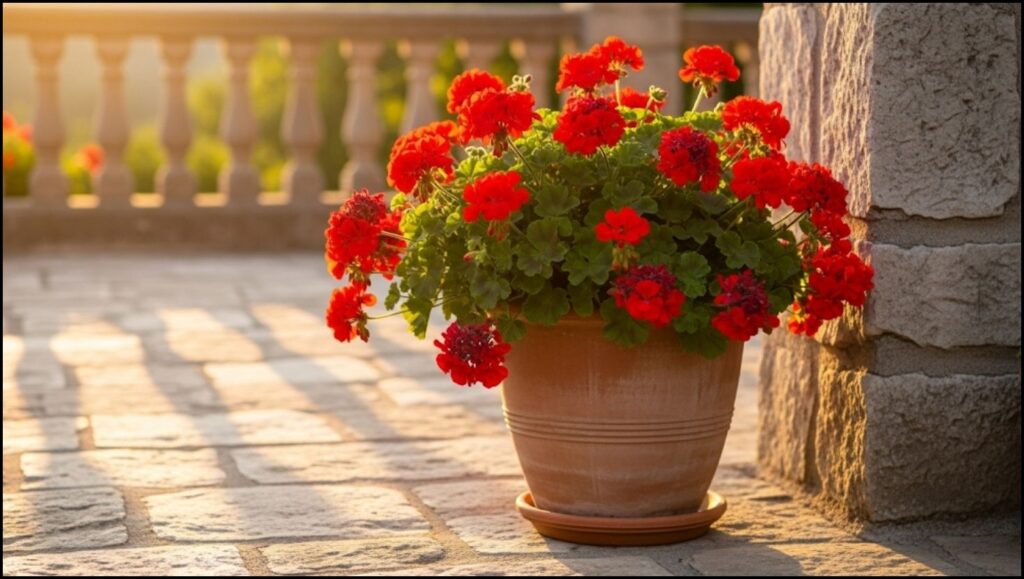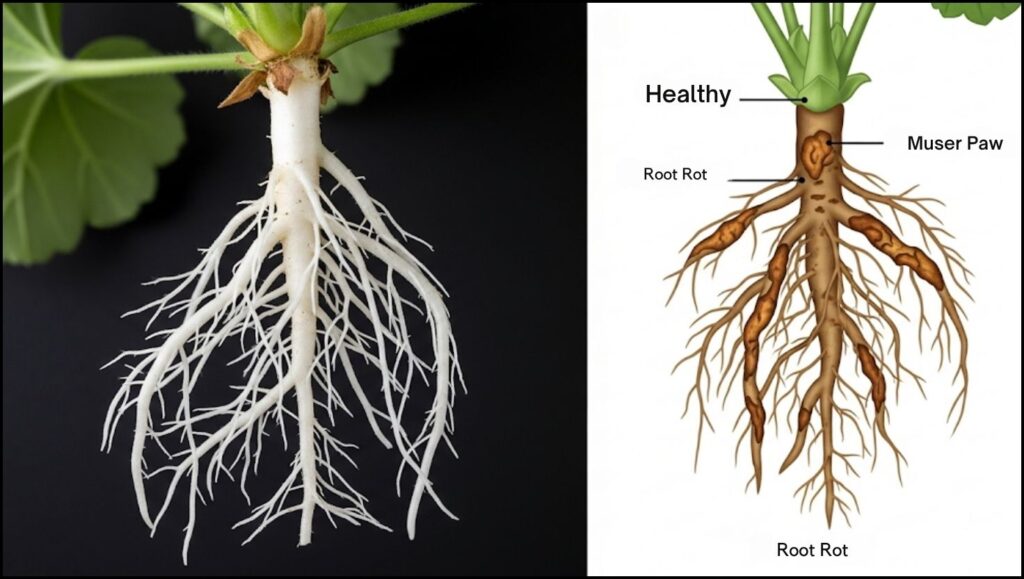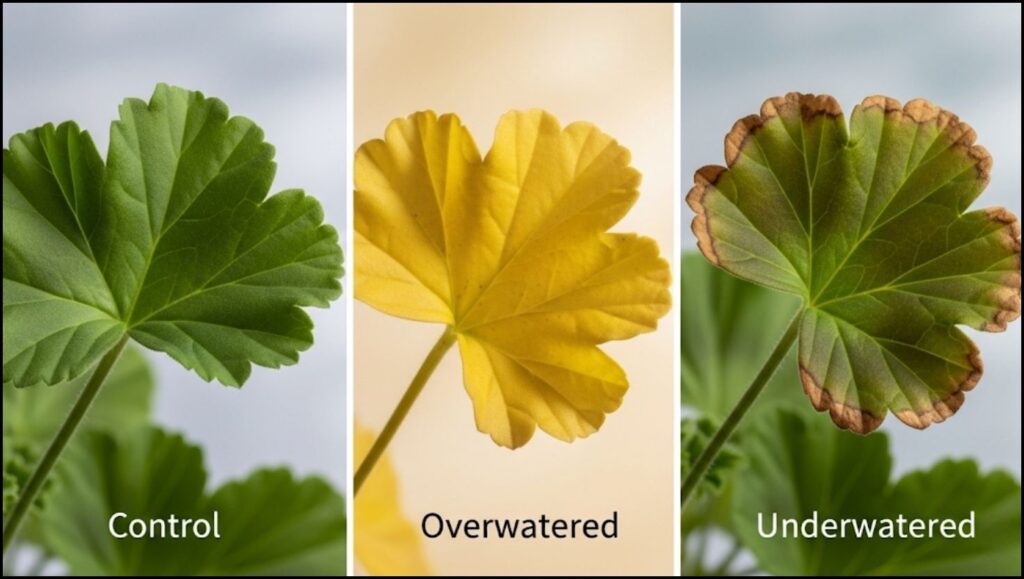
There is perhaps no flower more emblematic of a classic, sun-drenched summer garden than the geranium. With their velvety leaves and jewel-toned clusters of blossoms in shades of scarlet, rose, salmon, and crisp white, they are the tireless performers of the plant world. Yet, for all their robust beauty, the most common question I hear from fellow gardeners centers on one simple task: watering. Getting it just right is the key to unlocking their full potential. This guide will teach you exactly how often to water geraniums and the best techniques to ensure they grace your home with nonstop, spectacular blooms from the first warm days of spring until the first frost of fall.
Quick Tips for Perfect Geraniums
Here are the essentials for flawless watering:
- Feel the Soil First: The number one rule is to check the soil. Water only when the top inch feels dry to the touch.
- Water Deeply, Not Daily: When you do water, do so thoroughly until it drains from the bottom of the pot. Then, let it dry out.
- Morning is Best: Watering in the morning allows foliage to dry before nightfall, helping to prevent disease.
- Pots Need More Water: Plants in containers, especially terracotta, will dry out much faster than those planted in garden beds.
- Yellow Leaves Can Mean Too Much Water: Contrary to what many think, yellowing lower leaves are often a classic sign of overwatered geraniums, not thirsty ones.
The Golden Rule of Watering Geraniums: Less Is Often More
Before we discuss schedules and frequency, it’s essential to understand the nature of this beloved plant. Most of what we call geraniums are technically from the genus Pelargonium, which are native to South Africa. This heritage gives them a remarkable tolerance for dry conditions; in fact, they have semi-succulent properties, meaning they store water in their thick, fleshy stems.
In my own garden, I’ve learned that a slightly thirsty geranium is almost always happier than a waterlogged one. The most significant threat to their health is not drought but root rot, a devastating condition caused by soil that remains constantly soggy. When roots sit in water, they can’t access oxygen and begin to decay, leaving the entire plant vulnerable to fungal diseases. The takeaway is simple but profound: when in doubt, it’s better to wait another day before reaching for the watering can.

How Often to Water Geraniums: A Tailored Approach
There is no single, magic number for how often to water. The right frequency is a dance between the plant’s needs and its environment. A geranium in a small pot on a windy, sun-baked balcony will need water far more often than the same plant in a large, moisture-retentive bed on the north side of a house. Here’s how to assess the key factors.
The All-Important “Finger Test”
This is the most reliable method, and it’s the one I teach every new gardener. Forget watering on a strict Tuesday-Thursday schedule. Instead, simply insert your index finger into the soil up to your first knuckle.
- If the soil feels dry at that depth, it’s time to water.
- If it feels moist, wait. Check again the next day.
This simple, tactile check connects you directly to your plant’s needs, taking all the guesswork out of the equation.
Container vs. In-Ground Plants
Where your geranium lives has a massive impact on its thirst. This is especially true for watering geraniums in pots.
- Potted Geraniums: Containers have a limited soil volume that heats up and dries out quickly. During the peak of summer, you may need to water a potted geranium every 1-2 days. Small pots will need water more often than large ones.
- In-Ground Geraniums: Geraniums planted in garden beds have access to a much larger reservoir of soil moisture. After they are established, they may only need a deep watering once a week, or even less if you have significant rainfall.
The Influence of Weather and Light
Pay attention to the forecast. A string of hot, dry, and windy days will wick moisture from the soil and foliage rapidly, increasing the need for water. Conversely, during a cool, cloudy, or rainy spell, you can significantly reduce your watering cadence. A plant in full, blazing sun (6+ hours) will always be thirstier than one in partial shade.
Plant Size and Pot Material Matter
A large, leafy geranium with tons of flowers is a heavy drinker, as it’s using water for photosynthesis and transpiration. A smaller, newly planted geranium will need less. The type of container is also a critical factor. Porous materials like terracotta and unglazed ceramic allow moisture to evaporate through their walls, which is excellent for preventing root rot but means you’ll need to water more frequently. Plastic, glazed ceramic, or composite pots retain moisture for much longer.
The Best Way to Water: Technique Matters
How you water is just as important as how often. A light sprinkle on the soil surface does very little, as it encourages shallow, weak root growth.
Aim for a Deep, Thorough Soak
Your goal is to moisten the entire root ball. Water slowly and steadily at the base of the plant, avoiding the leaves as much as possible to discourage fungal issues like botrytis. Continue watering until you see it flowing freely from the drainage holes at the bottom of the pot. This ensures water has reached the deepest roots and also helps to flush out any excess fertilizer salts that can build up in the soil, according to guidance from the University of Minnesota Extension. Once it has drained, be sure to empty the saucer. Never let a geranium sit in a saucer full of water.
Reading the Signs: Troubleshooting Common Watering Woes
Your geranium will tell you when something is wrong. Learning to read the signs is a crucial part of excellent geranium care.
Signs of Overwatered Geraniums
This is the most common issue I see. Look for:
- Yellowing Lower Leaves: The oldest leaves at the base of the plant will turn yellow and may feel soft or limp before dropping off.
- Mushy Stems: The base of the stem may become brown, soft, and water-logged. This is a sure sign of root rot.
- Edema: You might notice small, watery bumps or blisters on the undersides of the leaves. This happens when the roots take up water faster than the leaves can transpire it, as noted by the North Carolina State Extension.
- Lack of Blooms: A waterlogged plant is a stressed plant, and it won’t have the energy to produce flowers.
Signs of Underwatering
While more tolerant of dryness, a truly thirsty geranium will also show clear signs:
- Wilting: The entire plant will look limp and droopy. Fortunately, geraniums often bounce back quickly after a good drink.
- Crispy, Brown Leaf Edges: The margins of the leaves may turn brown and feel dry and brittle.
- Flower Drop: Severe drought can cause the plant to shed its buds and flowers to conserve energy.

A Season of Beautiful Blooms Awaits
Mastering how often to water geraniums is less about a rigid schedule and more about becoming a careful observer. By paying attention to the feel of the soil, the type of container, and the daily weather, you provide your plants with precisely what they need, when they need it. This thoughtful approach not only prevents common problems but transforms a simple gardening chore into a rewarding ritual.
Now you are fully equipped to cultivate geraniums that are not just surviving but truly thriving. You can look forward to a stunning and continuous display of color on your porch, patio, or in your garden beds—a beautiful testament to a summer well-tended.
The 8 Best Zinnias to Refresh Your Garden, According to Horticultural Experts
